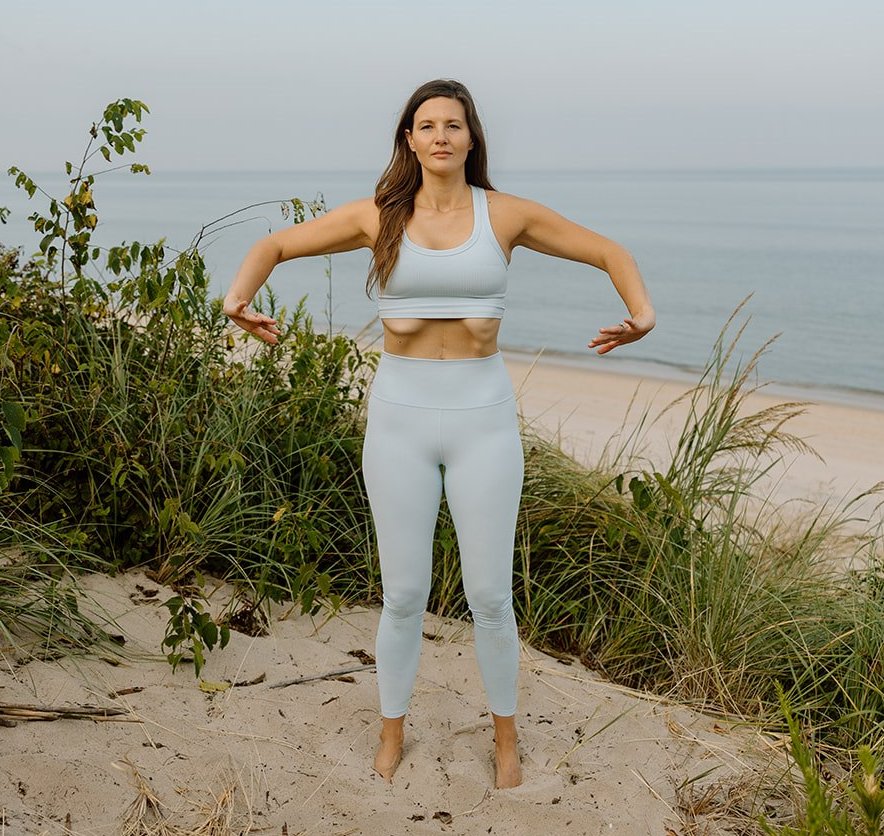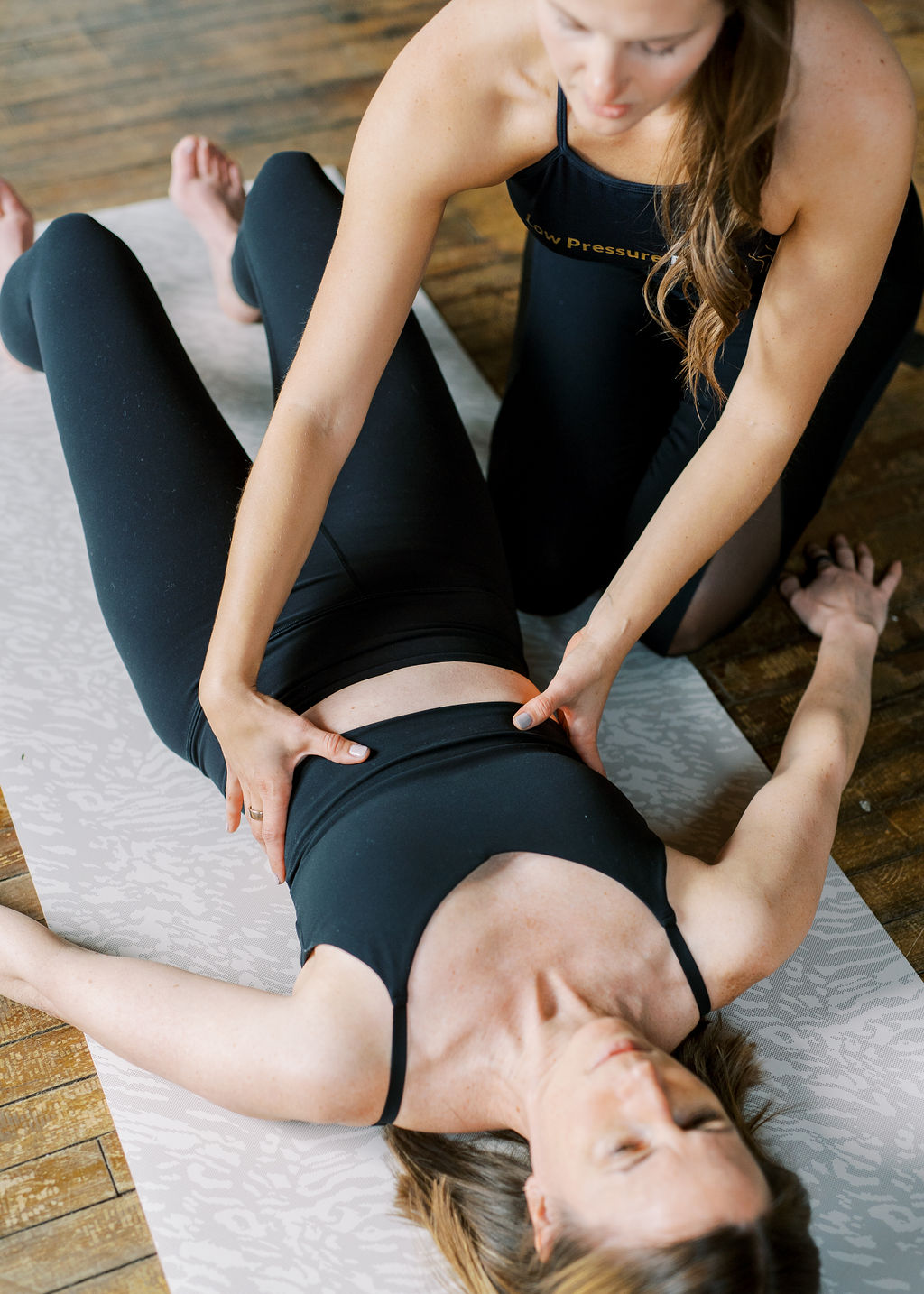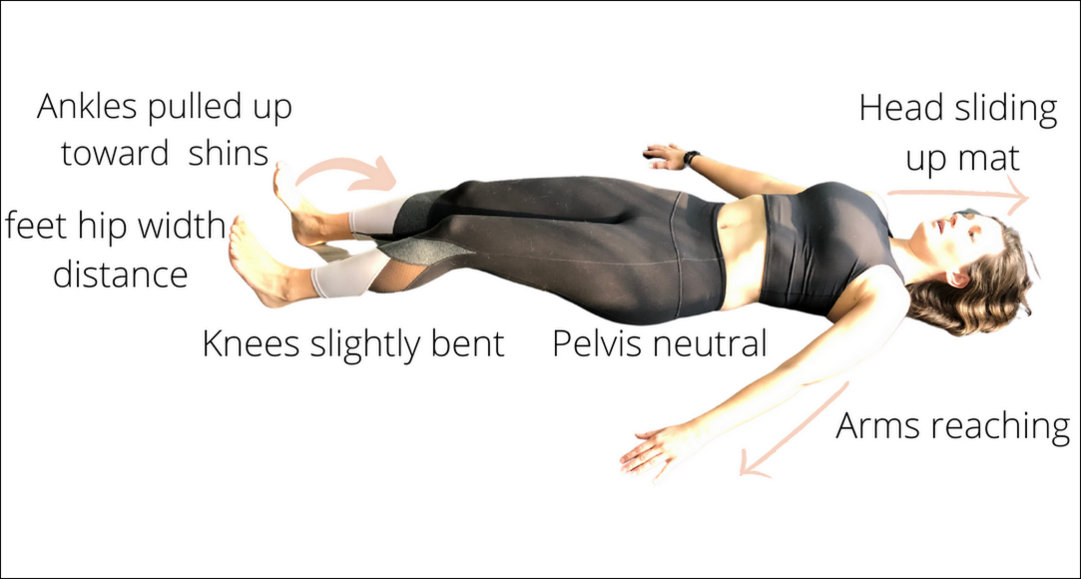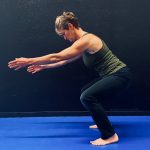
“Stop punishing your body for what it is not. Start affirming the strength that is inside you.”
~ Dr. Jenna Cornell
The Autoimmune Exercise Series
My goal with this exercise series is to profile different forms of exercise that may be especially beneficial to people with autoimmune disease. Often, after an autoimmune diagnosis, the exercise we did in the past no longer benefits our body. Instead, workouts may cause autoimmune flares. It’s disheartening and confusing when this happens. However, it doesn’t mean we should stop moving altogether. Research shows that exercise improves the health of people with autoimmune disease, whereas inactivity can actually increase inflammation.
The trick is finding the right form of exercise for you, and that might change based on your current level of symptoms. In this exercise series, I’ll be featuring a wide variety of techniques to help you find the forms of exercise your body enjoys the most. You might choose one type on days when your body needs more rest, and another type on days when your body is feeling great! There is usually some trial and error in this process of discovery, so don’t give up if it takes time to figure out what works for your unique body. Perfection is impossible, but finding ways to move that are both joyful and beneficial is a goal that’s worth the effort.
Introducing Dr. Jenna Cornell
Dr. Jenna Cornell is a Doctor of Physical Therapy, Certified Women’s Health Coach, and a Low Pressure Fitness Certified Instructor. Her physical therapy practice focuses on integrative solutions for abdominal and pelvic health. She believes that every women deserves to thrive in her body. She founded The Hypopressive Project in 2021 with a mission of making Low Pressure Fitness known and accessible to the women of the USA.
What is Low-Pressure Fitness?
Low Pressure Fitness is a comprehensive movement system. It combines breath work with intentional positioning to help decrease intra-abdominal pressure and strengthen posture. The method was developed in Spain around 2014. At its inception it was designed to allow for abdominal and pelvic floor strengthening without the increase in intra-abdominal pressure that comes with traditional core training. However, its benefits are numerous and extend beyond the core and pelvic floor.
The breath work used in the practice includes a hypopressive maneuver. The hypopressive maneuver is a breath hold that uses your diaphragm to lift your organs and activate your deep abdominals and pelvic floor. The postural positions are designed around the various fascial chains in your body. Utilizing the positions teaches your body how to use both your muscles and fascia to provide stability at the spine and distal joints.
How might this form of exercise help people with autoimmune disease?
There are several reasons I believe this practice is powerful for those with autoimmune disease:
- The breath work component is a powerful way to regulate the nervous system. The long, slow breath pattern helps to decrease stress and makes your body feel safe.
- The positions are specially designed to strengthen your postural muscles. Many autoimmune diseases (including my diagnosis of Sjogren’s Syndrome) affect the body’s connective tissue and are often accompanied by joint hypermobility. If your joints receive less support from the surrounding connective tissue, your postural muscles become even more important for pain-free movement!
- The hypopressive maneuver helps to mobilize your organs and the surrounding connective tissue. Why is this important for those of us with autoimmune disease? The connection between gut health and autoimmune development is undeniable. The majority of us have likely taken steps to improve the condition of our gut and digestive system, but have you ever thought about what inflammation in the digestive tract does to the connective tissue around it? Have you done anything to help restore those tissues to allow for optimal movement? I have found that for myself, and many of my patients, Low Pressure Fitness can help address discomfort from adhesions that are present in the abdominal cavity from either inflammation or surgery.
How has this type of exercise benefited you personally?
I have personally experienced the benefits of this practice in many ways. I had a surgery in 2015 to remove a tumor from my abdomen. Thankfully the tumor was benign. However, I was left with chronic abdominal pain. I had no idea how to help myself in this area despite being a physical therapist. Low Pressure Fitness was the first thing I found that allowed me to independently decrease my symptoms.
Low Pressure Fitness has also allowed me to strengthen my body without irritating my nervous system. I experienced significant fatigue and HPA axis dysregulation at the onset of my autoimmune journey. It was clear that my body was not benefiting from the intense exercise that I was accustomed to. Prior to discovering Low Pressure Fitness I really struggled mentally with “giving up exercise”. Low Pressure Fitness allowed me to build strength in my body while also calming my nervous system. The strength that I was able to build in my postural system also helped me resolve chronic neck and shoulder pain that I had experienced for years despite typical “evidence based” physical therapy interventions!
Low Pressure Fitness has also been a stepping stone in helping me relinquish my controlling tendencies. I am a type-A recovering perfectionist and a big part of healing my nervous system was accepting that there are things I simply cannot control. The hypopressive maneuver has an aspect that requires surrender. Physically so many of us grip and clench our abdominal muscles. We may have even been taught this is what we “should” do to support ourselves, just as we may have been taught we are supposed to control every other aspect of our lives. In reality, the clenching of our abdomen reduces the mobility of our organs and leads to increased intra-abdominal pressure. We are truly served in releasing the clenching and allowing our body to support itself deeply. When I came to the practice I was gripping my abs and trying to control every single aspect of my life.The surrender in both areas has been wonderful for my nervous system. There are parts of my life in which this is very much still a work in progress. However, the benefits that I have reaped from the daily practice of physical surrender has served as a wonderful reminder about how beautiful life can be when we place less pressure on ourselves.
Sample Exercise: Lateral Breathing
The foundation of the Low Pressure Fitness breath work practice is Lateral Breathing. In this method of breathing, the primary body part that moves is your lower ribcage. You can perform this type of breath in any position, however I would recommend the following to help you get started:
- Lie on your back with your knees bent into a comfortable position.
- Take a few breaths and assess what part of your body moves when you inhale. Your shoulders? Your belly? Your rib cage?
- Place your hands on your lower ribcage with your fingers facing each other and your thumbs wrapped around toward your back.
- Intentionally bring your breath into your lower ribcage. Start to push your hands away with each inhale. Allow your exhale to be gentle and passive. Practice until your ribcage is moving at least as much as your shoulders or belly. Breathing in this way prepares your body for the hypopressive maneuver.
Sample Exercise: Demeter
The Low Pressure Fitness breath framework is then applied within postural positions. The postural positions are all named after Greek goddesses. The first position that I typically start clients with is Demeter. To perform Demeter:
- Lie on your back. Ensure that your pelvis is neutral. You should have a small space between the floor and your lower back but your ribcage should be securely against the floor.
- Grow tall through your head, as if you are sliding your head along the floor away from your body.
- Place your arms in an upside down V and reach along the floor as if you are trying to reach past your heels.
- Place your feet hip-width distance apart and bend your knees as much as you need to for your pelvis and low back to stay neutral.
- Pull your ankles up toward your shins.
- Perform the lateral breathing in this positioning. Focusing on growing through the head, reaching through the hands and allowing the ribcage to move with your breath.
Sample Exercise: Athena

Athena is one of my favorite Low Pressure Fitness Positions. It was designed to make you feel confident and powerful. To perform Athena:
- Stand with your feet hip width distance apart.
- Find your pelvic neutral (imagine your pelvis as a bowl of water, and make sure you are not spilling the water).
- Grow tall through your spine, stacking your ribcage over your hips.
- Bring your elbows wide and your hands forward, press through your elbows and hands as if you were pressing against the inside of a barrel.
- Soften your knees bending them slightly.
- Imagine you are going down a ski slope and allow just your ankles to bend, bringing the weight of your body slightly forward. Keep your spine and hips in alignment. Avoid bending at the hips.
- Grow tall and breathe, opening your ribcage like an umbrella with each inhale.
Do you also have video examples of these exercises?
I created a demonstration video to go along with the article that can be found here.
Can these exercises be adapted around pain and mobility challenges?
Yes, I always encourage my clients to “meet your body where it is at”. Low Pressure Fitness is wonderful for people who are in pain because it is very low impact and is breath centered. The poses can be adapted to many mobility challenges, however not all poses may be accessible for everyone. I would encourage anyone with significant mobility challenges to work with a Certified Low Pressure Fitness instructor privately before joining any group classes or attempting to learn through on-demand content.
Where can people learn more about Low Pressure Fitness?
I offer a wide variety of ways to help people get started with Low Pressure Fitness through my online platform The Hypopressive Project.
- Online Course: I have a self-paced course called “Core Shift” that will guide you through the Level 1 Low Pressure Fitness breath work and postures. However, I truly believe that this method is best learned with live feedback. Because of that, I also offer bundles that include the course with either group classes or private sessions.
- Membership: I recently started offering monthly membership that grants you access to Core Shift and live group classes. I personally love the memberships because they give you a lot of support for an affordable price.
- Group Classes: You can always sign up for a single group class if you would like to try the method. Start with an “Introduction to LPF: Breath” class.
- Private Sessions: I offer private sessions which are wonderful for people when they are first getting started, or for guiding people with specific concerns.
How to connect with me:
Disclaimer
Each person’s exercise needs are unique. This exercise series is designed to introduce you to new forms of exercise that may or may not work for you. Always consult with your healthcare team before beginning a new exercise program. Also, pay attention to your body’s limits, and start slowly.
You May Also Be Interested In












